William Desmond Taylor
William Desmond Taylor (born William Cunningham Deane-Tanner, 26 April 1872 – 1 February 1922) was an Anglo-Irish-American film director and actor. A popular figure in the growing Hollywood motion picture colony of the 1910s and early 1920s, Taylor directed fifty-nine silent films between 1914 and 1922 and acted in twenty-seven between 1913 and 1915.[1]
William Desmond Taylor | |
|---|---|
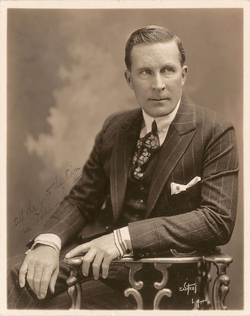 Taylor in 1917 | |
| Born | William Cunningham Deane-Tanner 26 April 1872 County Carlow, Ireland |
| Died | 1 February 1922 (aged 49) Los Angeles, California, US |
| Cause of death | Homicide |
| Resting place | Hollywood Forever Cemetery |
| Nationality | Irish (1872-1890) American (1890-1922) |
| Other names | William D. Taylor William Taylor |
| Occupation | Director, actor |
| Years active | 1913-1922 |
| Spouse(s) | Ethel May Hamilton ( m. 1901–1912) |
| Partner(s) | Neva Gerber (1914-1919) |
| Children | 1 |
| Relatives | Denis Gage Deane-Tanner (brother) |
Taylor's murder on 1 February 1922, along with other Hollywood scandals such as the Roscoe Arbuckle trial, led to a frenzy of sensationalist and often fabricated newspaper reports.[2] The murder remains an official cold case.[3]
Early life
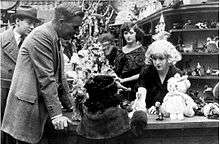
William Cunningham Deane-Tanner was born into the Anglo-Irish gentry on 26 April 1872, at Evington House, County Carlow, Ireland, one of five children of a retired British Army officer, Major Kearns Deane-Tanner of the Carlow Rifles, and his wife, Jane O'Brien. Taylor's siblings were Denis Gage Deane-Tanner, Ellen "Nell" Deane-Tanner Faudel-Phillips, Lizzie "Daisy" Deane-Tanner, and Oswald Kearns Deane-Tanner.[4] One of his uncles was Charles Kearns Deane Tanner, the member of parliament for Mid Cork.
From 1885 to 1887 Taylor attended Marlborough College in England.[5] In 1890, he left Ireland for a dude ranch in Kansas. There, Taylor became reacquainted with acting (his first experiences being at school) and eventually moved to New York City.[1]
While in New York, Taylor courted Ethel May Hamilton, an actress who had appeared in the stage musical Florodora under the name Ethel May Harrison. Hamilton's father was a broker and an investor in the English antiques store on Fifth Avenue, the Antique Shoppe, which eventually employed Taylor. The couple married in an Episcopal ceremony on 7 December 1901 at the Little Church Around the Corner,[4] and had a daughter, Ethel Daisy, in 1902 or 1903.[6]
Taylor and his family were well known in New York society and were members of several clubs. He was also a heavy drinker, possibly suffered from depression, and was known to carry on affairs with women. Taylor suddenly disappeared on 23 October 1908, deserting his wife and daughter.[1] After his disappearance, friends said he had previously suffered "mental lapses", and his family thought initially he had wandered off during an episode of amnesia. Taylor's wife obtained a state decree of divorce in 1912.[7][8]
Little is known of the years immediately following Taylor's disappearance. He traveled through Canada, Alaska and the northwestern U.S., mining gold and working with various acting troupes. Eventually, he switched from acting to producing. By the time he arrived in San Francisco around 1912, he had changed his name to William Desmond Taylor;[1] in San Francisco, some New York acquaintances met him, and provided him with some money to re-establish himself in Los Angeles.[7]
Hollywood
In Hollywood, Taylor worked as a film actor starting in 1913, including four appearances opposite Margaret "Gibby" Gibson. He directed his first film, The Awakening, in 1914, as an actor-director. Over the next few years, he directed more than 50 films. Between 1914 and 1919, Taylor was engaged to actress Neva Gerber, whom he had met during the filming of The Awakening. Gerber later recalled, "He was the soul of honour, a man of personal culture, education, and refinement. I have never known a finer or better man."[9]
Around 1915, Taylor made contact with a sister-in-law, Ada Brennan Deane-Tanner, wife of Taylor's younger brother Denis. A former British Army lieutenant and manager of New York antiques business (separate from Hamilton's), Denis had also abandoned his wife and children, disappearing in 1912.[6] Ada and her daughters moved to Monrovia, California, where Ada could be treated at the Pottinger Sanitorium for tuberculosis. Ada's sister, Lillian Pomeroy, was married to the sanitorium's physician in charge, Dr. John L. Pomeroy.[10] This would become public after Taylor's murder, and the press descended upon the little town of Monrovia.
Towards the end of World War I, in July 1918, Taylor enlisted in the Canadian Expeditionary Force as a private. After training for four and a half months at Fort Edward, Nova Scotia, Taylor sailed from Halifax on a troop transport carrying 500 Canadian soldiers.[11] They arrived at Hounslow Barracks, London on 2 December 1918.[11]
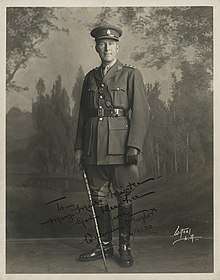
Taylor was ultimately assigned to the Royal Army Service Corps of the Expeditionary Forces Canteen Service, stationed at Dunkirk, and promoted to the temporary grade of lieutenant on 15 January 1919.[12] At the end of April 1919, Taylor reached his final billet at Berguet, France, as Major Taylor, Company D, Royal Fusiliers.[13] Upon returning to Los Angeles on 14 May 1919, Taylor was honoured by the Motion Picture Directors Association with a formal banquet at the Los Angeles Athletic Club.[13]
After returning from military service, Taylor went on to direct some of the most popular stars of the era, including Mary Pickford, Wallace Reid, Dustin Farnum and his protégée, Mary Miles Minter, who starred in the 1919 version of Anne of Green Gables.
By this time, Taylor's ex-wife and daughter were aware that he was working in Hollywood. In 1918, while watching the film Captain Alvarez, they saw Taylor appear on the screen. Ethel responded, "That's your father!" In response, Ethel Daisy wrote Taylor in care of the studio. In 1921, Taylor visited his ex-wife and daughter in New York City and made Ethel Daisy his legal heir.
Murder
At 7:30 am on the morning of Thursday, 2 February 1922,[14] Taylor's body was found inside his bungalow at the Alvarado Court Apartments,[14] 404-B South Alvarado Street,[15] in Westlake, Los Angeles, a trendy and affluent neighborhood. A crowd gathered inside, and someone identifying himself as a doctor stepped forward, made a cursory examination of the body, and declared Taylor had died of a stomach hemorrhage. The doctor was never seen again; when doubts later arose, the body was rolled over by forensic investigators revealing that the 49-year-old film director had been shot at least once in the back with what appeared to have been a small-caliber pistol, which was not found at the scene.
Funeral
Taylor's funeral took place on 7 February 1922, in St. Paul's Cathedral. After an Episcopal ceremony, Taylor was interred in a mausoleum at Hollywood Cemetery, now named Hollywood Forever Cemetery, on Santa Monica Boulevard, in Hollywood.[16] The inscription on his crypt reads, "In Memory of William C. Deane-Tanner, Beloved Father of Ethel Deane-Tanner. Died 1 February 1922."[17]
Investigation
In Taylor's pockets, investigators found a wallet holding $78 in cash (adjusted for inflation in 2020 would be approx. $1,190), a silver cigarette case, a Waltham pocket watch, a pen knife, and a locket bearing a photograph of actress Mabel Normand.[18] A two-carat diamond ring was on his finger.[19] With the evidence of the money and valuables on Taylor's body, robbery seemingly was not the motive for the killing; however, a large but undetermined sum of cash that Taylor had shown to his accountant the day before was missing and apparently never accounted for. After some investigation, the time of Taylor's death was set at 7:50 pm on the evening of 1 February 1922.[15]
While being interviewed by the police five days after the director's body was found, Mary Miles Minter said that following the murder, a friend, director and actor Marshall Neilan, had told her that Taylor had made several highly "delusional" statements about some of his social acquaintances (including her) during the weeks before his death. She also said that Neilan thought Taylor had recently become "insane".[20]
In the midst of a media circus caused by the case, Los Angeles Undersheriff Eugene Biscailuz warned Chicago Tribune reporter Eddie Doherty, "The industry has been hurt. Stars have been ruined. Stockholders have lost millions of dollars. A lot of people are out of jobs and incensed enough to take a shot at you."[21]
According to Robert Giroux, "The studios seemed to be fearful that if certain aspects of the case were exposed, it would exacerbate their problems." King Vidor said of the case in 1968: "Last year I interviewed a Los Angeles police detective, William Michael Cahill, Sr., now retired, who had been assigned to the case immediately after the murder. He told me, 'We were doing all right and then, before a week was out, we got the word to lay off.'"[21]
Suspects and witnesses
More than a dozen individuals were eventually named as suspects by both the press and the police. Newspaper reports at the time were both overwhelmingly sensationalised and speculative, even fabricated, and the murder was used as the basis for much subsequent "true crime" fiction. Many inaccuracies were carried forward by later writers who used articles from the popular press as their sources. Overall, most accounts have consistently focused on seven people as suspects and witnesses.
Edward Sands
Edward F. Sands had prior convictions for embezzlement, forgery, and serial desertion from the US military. Born in Ohio, he had multiple aliases and spoke with an affected cockney accent. He had worked as Taylor's valet and cook until seven months before the murder. While Taylor was in Europe the summer before in 1921, Sands had forged Taylor's name on cheques and wrecked his car. Later, Sands burgled Taylor's bungalow, leaving footprints on the film director's bed. Following the murder, Sands was never seen or heard from again.[22]
Henry Peavey
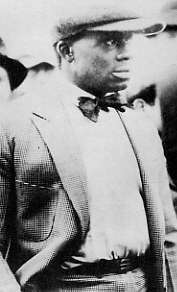
Henry Peavey, who replaced Sands as valet, was the person who found Taylor's body. Newspapers noted that Peavey wore flashy golf costumes, but did not own any golf clubs. Three days before Taylor's murder, Peavey had been arrested for "social vagrancy" and charged with being "lewd and dissolute".[23]
According to Robert Giroux,
Even though the police decided, after severe questioning, that Peavey was not the murderer, the Hollywood correspondent of the New York Daily News, Florabel Muir, came to a private conclusion that Peavey was the murderer. In that era of ingenious women reporters, Muir thought she could engineer a scoop by tricking Peavey into a confession. She knew (from the movies) that blacks were deathly afraid of ghosts. With the help of two confederates, Frank Carson and Al Weinshank, she offered Peavey ten dollars if he would identify Taylor's grave in the Hollywood Park Cemetery (which she had already visited). Weinshank had gone on ahead with a white sheet, and Muir and Carson drove Peavey to the site. Weinshank, who came from a tough section of Chicago, spoke with the accents of a hoodlum. When he loomed up in the sheet and cried out, "I am the ghost of William Desmond Taylor. You murdered me. Confess, Peavey!" Henry laughed out loud. Then he cursed them roundly. Unfortunately for Muir, she was unaware that Taylor had a distinctive British accent. Weinshank, as Muir revealed in her memoirs, not only spoke like a hoodlum, but also was one of the Chicago mobsters who were [sic] later gunned down in the infamous St. Valentine's Day Massacre.[24]
In 1931, Peavey died in a San Francisco asylum where he had been hospitalized for syphilis-related dementia.[25]
Mabel Normand
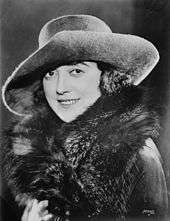
Mabel Normand was a popular comedic actress and frequent costar with Charlie Chaplin and Roscoe Arbuckle. According to author Robert Giroux, Taylor was deeply in love with Normand, who had originally approached him for help to cure her cocaine dependency. Based upon Normand's subsequent statements to police investigators, her repeated relapses were devastating for Taylor. According to Giroux, Taylor met with federal prosecutors shortly before his death and offered to assist them in filing charges against Normand's cocaine suppliers. Giroux expresses a belief that Normand's suppliers learned of this meeting and hired a contract killer to assassinate the director. According to Giroux, Normand suspected the reasons for her lover's murder, but did not know the identity of the triggerman.[26]
On the night of the murder, Normand claimed to have left Taylor's bungalow at 7:45 pm in a happy mood, carrying a book he had lent her. She and Taylor blew kisses to each other as her limousine drove her away. Normand was the last person known to have seen Taylor alive, and the Los Angeles Police Department subjected her to a grueling interrogation, but ruled her out as a suspect.[27] Most subsequent writers have done the same. However, Normand's career had already slowed, and her reputation was tarnished by revelations of her addiction, which was seen as a moral failing. According to George Hopkins, who sat next to her at Taylor's funeral, Normand wept inconsolably throughout the ceremony.[28]
Ultimately, Normand continued to make films throughout the 1920s. She died of tuberculosis eight years later on 23 February 1930. According to her friend and confidante Julia Brew, Normand asked her a few days before she died: "Julia, do you think they'll ever find out who killed Bill Taylor?"[17]
Faith Cole MacLean
Faith Cole MacLean and her husband, actor Douglas MacLean, were Taylor's neighbors, and Faith is widely believed to have seen Taylor's killer. The couple was startled by a loud noise at 8 pm. MacLean went to and opened her front door and she saw someone emerging from the front door of Taylor's home who she said was dressed, "like my idea of a motion picture burglar". She recalled this person paused for a moment before turning and walking back through the door, as if having forgotten something, then re-emerged seconds later and flashed a smile at her before running off and disappearing between the buildings. Mrs. MacLean thought that the loud noise she had heard was a car back-fire, not a gunshot. She also told police interviewers this person looked "funny" (like movie actors in white-faced makeup) and speculated that it may have been a woman disguised as a man due to the person's height and build.
Charles Eyton
Charles Eyton was the general manager of Paramount Pictures. Several sources claimed that in the hours following Taylor's murder, Eyton entered Taylor's bungalow with a group of Paramount employees and removed compromising items, either before police arrived or with their permission.
Mary Miles Minter

Mary Miles Minter was a former child star and teen screen idol, whose career had been guided by Taylor. Minter, who had grown up without a father, was only three years older than the daughter Taylor had abandoned in New York. Love letters from Minter were found in Taylor's bungalow. Based upon these, the reporters alleged that a sexual relationship between the 49-year-old Taylor and 19-year-old Minter had started when she was 17. Robert Giroux and King Vidor, however, disputed this allegation. Citing Minter's own statements, both believed that her love for Taylor was unrequited. Taylor had often declined to see Minter and had described himself as too old for her.
However, facsimiles of Minter's passionate letters to Taylor were printed in newspapers, forever shattering her screen image as a modest and wholesome young girl. Minter was vilified in the press. She made four more films for Paramount, and when the studio failed to renew her contract, she received offers from many other producers. Never comfortable as an actress, Minter declined them all. In 1957, she married Brandon O. Hildebrandt, a Danish-American businessman.[29] She died in Santa Monica, California, on 4 August 1984.
Charlotte Shelby
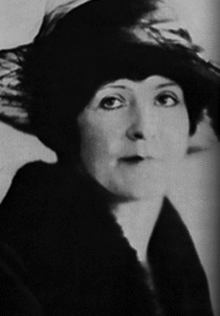
Charlotte Shelby was Minter's mother. Like many stage mothers before and since, she has been described as manipulative and consumed by wanton greed over her daughter's career. Minter and her mother were bitterly divided by financial disputes and lawsuits for a time, but they later reconciled. Shelby's initial statements to police about the murder are still characterized as evasive and "obviously filled with lies" about both her daughter's relationship with Taylor and "other matters".[30]
Perhaps the most compelling bit of circumstantial evidence was that Shelby allegedly owned a rare .38-caliber pistol and some unusual bullets which were very similar to the kind which had killed Taylor. After this information became public, she reportedly threw the pistol into a Louisiana bayou.
Shelby knew the Los Angeles district attorney socially and spent years outside the United States, in an effort to avoid both official inquiries by his successor and press coverage related to the murder. In 1938, her other daughter, actress Margaret Shelby (who was by then suffering from both clinical depression and alcoholism), openly accused her mother of the murder. Shelby was widely suspected of the crime and was a favorite suspect of many writers. For example, Adela Rogers St. Johns speculated that Shelby was torn by feelings of maternal protection for her daughter and her own attraction to Taylor.
Although (like Edward Sands) Shelby feared being tried for the murder, at least two Los Angeles County district attorneys publicly declined to prosecute her.[14][31] Almost 20 years after the murder, Los Angeles district attorney Buron Fitts concluded evidence was insufficient for an indictment of Shelby and recommended that the remaining evidence and case files be retained on a permanent basis (all of these materials subsequently disappeared). Shelby died in 1957. Fitts, in ill health, committed suicide in 1973.
Margaret Gibson
.jpg)
Margaret Gibson was a film actress who had worked with Taylor when he first came to Hollywood. In 1917, she was indicted, tried, and acquitted on charges equivalent to prostitution (also with allegations of opium dealing), after which she changed her professional name to Patricia Palmer. In 1923, Gibson was arrested and jailed on extortion charges, which were later dropped. Gibson was 27 years old and in Los Angeles at the time of the murder. No record of her name was ever mentioned in connection with the investigation. Soon after the murder, she got work in a number of films produced by Famous Players-Lasky, Taylor's studio at the time of his death. Shortly before she died in 1964, Gibson reportedly confessed to murdering Taylor. [Tinseltown, Wm J. Mann]
Lack of evidence
Through a combination of poor crime-scene management and apparent corruption, much physical evidence was immediately lost and the rest vanished over the years, although copies of a few documents from the police files were made public in 2007.[32] Various theories were put forward after the murder and in the years since, and many books were published, claiming to have identified the murderer, but no hard evidence was ever uncovered to link the crime to a particular individual.
Aftermath
A spate of newspaper-driven Hollywood scandals during the early 1920s included Taylor's murder, the Roscoe Arbuckle trial, the death of Olive Thomas, the mysterious death of Thomas H. Ince, and the drug-related deaths of Wallace Reid, Barbara La Marr, and Jeanne Eagels, all of which prompted Hollywood studios to begin writing contracts with "morality clauses" or "moral turpitude clauses", allowing the dismissal of contractees who breached them.[33][34]
See also
In popular culture
- The murder appears in F Scott Fitzgerald's 1940 story 'Pat Hobby's Christmas Wish'. Hobby discovers a supposed confession to the murder from a Hollywood producer and tries to use it to blackmail him.
- The film Sunset Boulevard (1950), with William Holden and Gloria Swanson, featured a fictional, aging silent screen actress named "Norma Desmond", whose name was taken from Taylor's middle name and Mabel Normand's last name, as a way to resonate with the widely publicised scandals of almost 30 years before.[35]
- The film Hollywood Story (1951), an attempt by Universal Pictures to take advantage of the success of Sunset Boulevard, is clearly based directly on the Taylor murder.[36] While the film reaches a fictional conclusion, it follows the circumstances of the real-life event closely.
- Gore Vidal's novel Hollywood (1990) features a fictionalised account of the Taylor murder.[37]
- Taylor's murder was depicted in David Merrick's production of the Jerry Herman - Michael Stewart "cult" musical Mack & Mabel, which opened on Broadway at the Majestic Theatre on 6 October 1974, and ran for six previews and 66 regular performances. Directed and choreographed by Gower Champion, the production starred Robert Preston as Mack Sennett and Bernadette Peters as Mabel Normand, with James Mitchell portraying William Desmond Taylor.[38]
- "Old Hollywood: Silent Stars, Deadly Secret," an episode of the A&E true crime series City Confidential, aired in 2000 and is about the Taylor murder.[39]
- In 2012, to mark the 140th anniversary of his birth, The William Desmond Taylor Society, in his home town of Carlow, Ireland, established Taylorfest, an annual arts and film festival honoring Ireland's most prolific filmmaker and celebrating the contribution of the Irish to silent film.
- TinPot and Cleverality Productions produced, with funding from The Broadcast Authority of Ireland, a one-hour drama-documentary examining the murder of William Desmond Taylor presented in the style of a 1920s live radio show entitled Who Killed Bill? (2013). Written and directed by Marc-Ivan O'Gorman, the show combined dramatizations with interviews from experts, including Oscar-winning film historian Kevin Brownlow.
- In 2018, Buzzfeed Unsolved produced a video discussing "The Scandalous Murder of William Desmond Taylor".
- In 2020, Wondery released a six-episode podcast series "Murder in Hollywoodland" about the murder.

Career as director
Taylor directed more than 60 films. These include:
- The Diamond From the Sky (1915)
- The Heart of Paula (1916; *co-directed with friend Julia Crawford Ivers)
- Davy Crockett (1916)
- Tom Sawyer (1917)
- Mile-a-Minute Kendall (1918)
- How Could You, Jean? (1918) with Mary Pickford
- Anne of Green Gables (1919) with Mary Miles Minter
- Huckleberry Finn (1920)
- Judy of Rogue's Harbor (1920)
- Jenny Be Good (1920)
- The Furnace (1920)
- Wealth (1921)
- The Green Temptation (1922) (released posthumously)
- The Top of New York (1922) (released posthumously)
References
- "The Unsolved Murder of William Desmond Taylor". usc.edu. 2 July 2000. Archived from the original on 29 June 2010. Retrieved 21 July 2014.
- Taylorology (newsheet), September 2003; retrieved 6 January 2008.
- Taylorology (newsheet) Issue 4, April 1993; retrieved 12 May 2013.
- Higham, Charles (2006). Murder in Hollywood: Solving a Silent Screen Mystery. Terrace Books. pp. 26, 33, 34. ISBN 0-299-20364-6.
- Marlborough College Register from 1843 to 1904 Inclusive.
- "Slain Movie Man Had Career Here; Deserted His Wife". The New York Times. 5 February 1922. Archived from the original (PDF) on 25 May 2017. Retrieved 7 April 2009 – via Newspapers.com

- "Slain Move Man [Desmond Taylor] Had Career Here ... second page of article". The New York Times. 5 February 1922. p. 20. Retrieved 25 May 2017.
- "Interviews with Taylor's Ex-Wife". Taylorology (45). September 1996.
- Giroux (1990), page 82.
- The Southern California Practitioner, Stoll & Thayer (1912), pp. 42, 249, 380.
- Giroux (1990), p. 105.
- Supplement to the London Gazette, 27 January 1919, p. 1333; retrieved 23 February 2008. The published note reads, "Canteens.—William Desmond Taylor to be •temp. Lt. (without pay or allowances). 15 January 1919."
- Giroux (1990), page 107.
- TheMinx-WDTaylor "Crime & Passion" (on William Desmond Taylor) Archived 20 November 2006 at the Wayback Machine. Minx, The Magazine Volume Two. Issue Two. (Minx), Neal Patterson, 1998–99.
- William Desmond Taylor entry, Internet Accuracy Project (accuracyproject.org); accessed 21 August 2014.
- "Impressive Scenes as Director's Body Is Laid at Rest," Los Angeles Times, February 8, 1922, page II-1
- Giroux (1990), p. 239.
- Giroux (1990), page 15.
- "Shot in the Back." Archived 14 July 2006 at the Wayback Machine Crime Library, Courtroom Television Network, LLC, 2005.
- "Statement of Mary Miles Minter." (LAPD) 7 February 1922; retrieved 28 August 2007.
- Giroux (1990), page 180.
- "Badly Wanted". Time. 29 August 1929. Retrieved 21 July 2007.
Edward F. Sands, 34, 5 ft 5 in., for the murder of William Desmond Taylor, cinema director, whose butler he was. Questioned in this case were Cinemactresses Mabel Normand, last to see Taylor alive, and Mary Miles Minter whose lingerie and love letters were found in the Taylor apartment.
- "Valet in Court on Vagrancy Charge", Los Angeles Record (3 February 1922), reprinted in Taylorology, p 60.
- Giroux (1990), page 131.
- "Film Star Faints at Taylor's Funeral". The New York Times. 28 February 1922.
Los Angeles; 7 February 1922. Sweeping the police aside crowds stormed the doors of St. Paul's Pro-Cathedral today in an effort to force an entrance when the funeral services were being held for William Desmond Taylor.
- Robert Giroux, A Deed of Death: The Story Behind the Unsolved Murder of Hollywood Director William Desmond Taylor, Alfred A. Knopf, New York, 1990.
- "Press Film Star For Taylor Clew". The New York Times. 7 February 1922.
A motion picture actress was subjected to what the police termed a "long and grueling" examination at her home here tonight in an attempt to obtain a clew to the murderer of William Desmond Taylor.
- Giroux (1990), page 236.
- Giroux (1990), pp. 159–160.
- Taylorology-97 Taylorology. (newsheet), Issue 97, Editor: Bruce Long, 2007 (after 7 year hiatus)
- In 1967, director King Vidor privately speculated that while Taylor escorted Mabel Normand to her car, Shelby entered the bungalow through the open front door, found her daughter Mary Miles Minter hiding inside (supposedly explaining a nightgown found by police which, despite sensationalized reports in the Hearst press, was never linked to Minter), and shot Taylor within an hour of his return. Biographer Sidney D. Kirkpatrick claimed in his book Cast of Killers (1986) that Vidor had solved the crime, asserting that the director had not published his conclusions to protect people who were at the time still living. Taylorology subsequently listed over 100 factual errors in Cast of Killers and strongly disputes Vidor's speculation on the murder, but credits the book with renewing public interest in the topic.
- Taylorology 97 "Excerpts of Statements of Witnesses In Re William Desmond Taylor Murder 1922 – 1936", "Statement of Miss Mary Miles Minter in the Office of the District Attorney 7 February 1922"
- Menefee, David W. (2004). The First Female Stars: Women of the Silent Era. Greenwood Publishing Group. p. 132. ISBN 0-275-98259-9.
- Vogel, Michelle (2007). Olive Thomas: The Life and Death of a Silent Film Beauty. McFarland. p. 6. ISBN 978-0-7864-2908-0.
- Petro, Patrice (2010). Idols of Modernity: Movie Stars of the 1920s. Rutgers University Press. p. 2. ISBN 978-0-813-54732-9.
- Lyons, Arthur (2000). Death on the Cheap: The Lost B Movies of Film Noir!. Da Capo Press. p. 99. ISBN 978-0-306-80996-5.
- Lehmann-Haupt, Christopher (18 January 1990). "Vidal's Remaking of the American Myth". nytimes.com. Retrieved 21 November 2012.
- "Mack & Mabel". playbillvault.com. Retrieved 21 November 2012.
- https://www.tvguide.com/tvshows/city-confidential/episode-2366073/194526/
Further reading
- Giroux, Robert (1990). A Deed of Death: The Story Behind the Unsolved Murder of William Desmond Taylor. Knopf. ISBN 0-394-58075-3.
- Higham, Charles (2004). Murder in Hollywood: Solving a Silent Screen Mystery. University of Wisconsin Press. ISBN 0-299-20360-3.
- Kirkpatrick, Sidney D. (1992). A Cast of Killers. Onyx; Reprint edition. ISBN 0-451-17418-6.
- Long, Bruce (1991). William Desmond Taylor: A Dossier. Scarecrow Press. ISBN 0-8108-2490-6.
- Druxman, Michael B. (2014). Murder in Babylon: A Novel Based on Fact. BearManor Media. ISBN 978-1593937829.
- Sennett, Mack (1954). King of Comedy. Doubleday. ISBN 0-916515-66-4.
- Brash, S. and J. Cave, ed. (1993). "The Director". Unsolved Crimes (True Crime Series). Time-Life Books. ISBN 0-7835-0012-2.
- Lagan, Dominic (2009). Fallen Angels, a Blackwood McCabe Hollywood Mystery. Strategic Books. ISBN 978-1-60860-196-7.
- Mann, William J. (2014). Tinseltown: Murder, Morphine, and Madness at the Dawn of Hollywood. HarperCollins. ISBN 978-0-06-224216-7.
External links
| Wikimedia Commons has media related to William Desmond Taylor. |
- Taylorology Homepage Links to all issues of Taylorology (4 through 98).
- William Desmond Taylor on IMDb
- William Desmond Taylor at the TCM Movie Database

- The Kiss on YouTube
- 16 Silent Film Celebrities & the William Desmond Taylor Case on YouTube